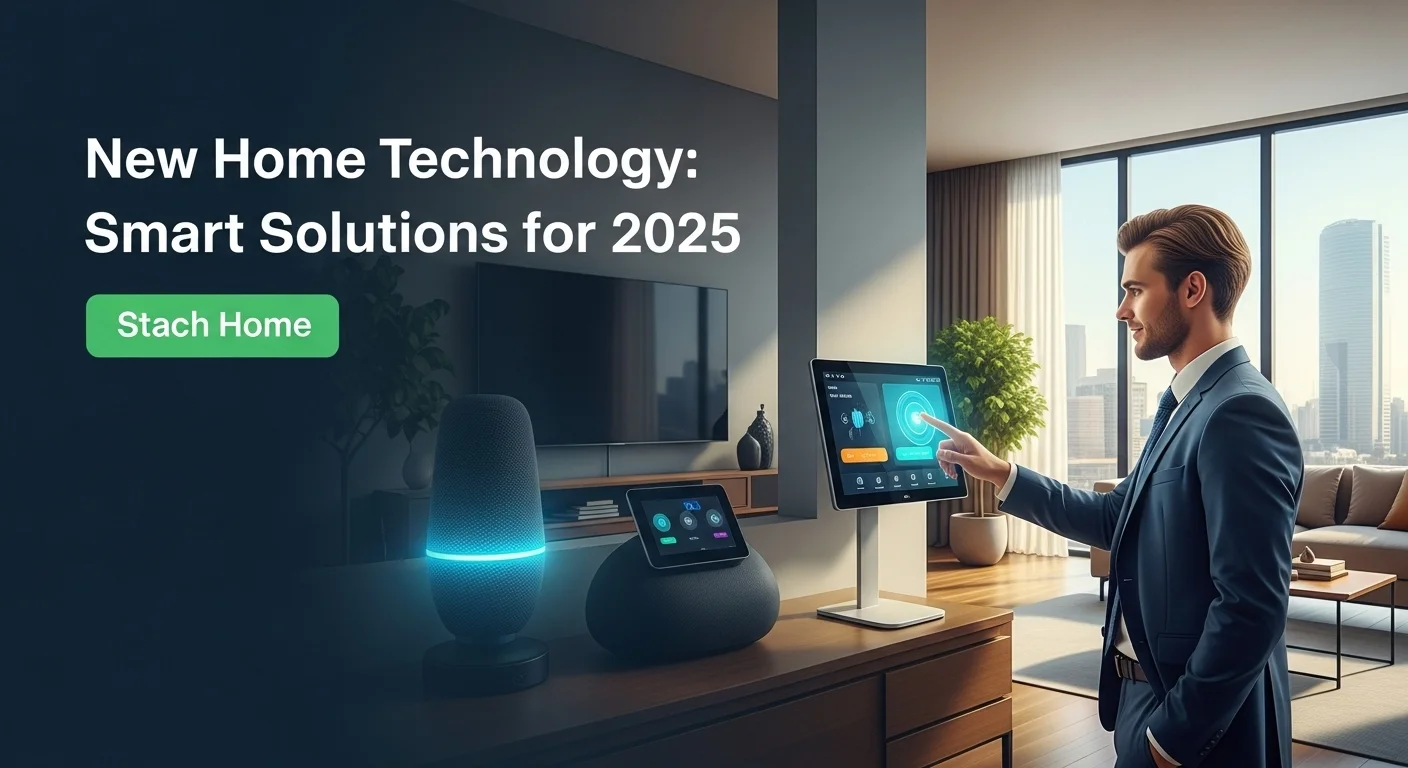Your Smart Home, Smarter Business: A Practical Guide to Integrated Technology

Executive Summary
I’ve spent over a decade wiring up homes and businesses, turning a mess of gadgets into a single, seamless experience. The magic isn't just about turning on lights with your voice; it's about creating an environment that works *for* you. This concept, the 'Integrated Home,' is changing how we live and opening up incredible opportunities for businesses in real estate, hospitality, and even healthcare. In this guide, I'll break down what a truly connected home looks like, explain when you need a professional integrator, and compare popular solutions like Vivint and SimpliSafe. Let's demystify smart home tech and find out how you can leverage it.
Table of Contents
What is an Integrated Home and Why Should You Care?
In simple terms, an 'Integrated Home' is one where all your technology—your lights, thermostat, security cameras, speakers, and even your blinds—are connected and work together as a single system. I’ve seen the term 'smart home' thrown around a lot, but a truly integrated home is more than just a few smart plugs. It’s about creating harmony between devices so you can control everything from one place, like an app on your phone, a slick touchscreen panel, or just by using your voice with assistants like Alexa or Google Assistant. The reason this matters so much today is that it’s the most personal and practical use of the Internet of Things (IoT). It takes the abstract idea of 'connected devices' and turns it into a home that responds to your needs, making life more convenient, efficient, and secure.
From Simple Automation to True Integration
I remember the early days of home automation—fiddly light timers and clunky programmable thermostats. They were 'automated' but worked in isolation. The real revolution is in the 'integration.' Imagine a 'Good Morning' scene I often program for clients: your shades slowly rise with the sun, the thermostat adjusts to your preferred temperature, your favorite playlist starts softly, and the lights gently fade on in the kitchen. This beautiful dance of technology is what separates modern integrated smart home solutions from a house with a few scattered gadgets. This leap forward was powered by better wireless tech, cloud computing, and AI that allows your home to learn your habits. For instance, a modern smart thermostat doesn't just follow a schedule; it learns when you're home or away to save energy all on its own.
The Core Parts of a Connected Home
Building a seamless smart home relies on a few key ingredients working in concert:
- The Brain (Hub or Controller): This is the heart of your system. It’s a central device, like a Samsung SmartThings hub or an Amazon Echo, that acts as a translator, allowing all your different smart products to communicate with each other.
- The Senses (Smart Devices and Sensors): This is the fun stuff—the ever-growing world of smart lights, locks, thermostats, cameras, speakers, and even refrigerators. Sensors for motion, temperature, and water leaks act as the system's eyes and ears, feeding it data to trigger automations.
- The Language (Communication Protocols): Devices need a common language to talk. The most common ones are Wi-Fi, Bluetooth, Zigbee, and Z-Wave. A new standard called 'Matter' is emerging, and it’s a game-changer. Think of it as a universal translator, designed to make it incredibly simple for devices from different brands to work together.
- The Control Panel (User Interface): This is how you interact with your home. It could be an app, a wall-mounted touchscreen, or your voice. In my experience, a simple and intuitive interface is everything. The best technology feels invisible.
Why a Smart Home Integrator is Key
While setting up a single smart speaker is easy, creating a truly integrated smart home is a different beast. That’s where a professional smart home integrator, like myself, comes in. Think of us as the architects and general contractors for your home's technology. Our job includes:
- Listening and Designing: We sit down with you to understand your lifestyle, needs, and budget to create a custom-tailored plan. This initial blueprint is vital for a system that you'll love for years to come.
- Choosing the Right Gear: We navigate the sea of smart devices to find reliable products that play well together, so you don't have to worry about compatibility issues.
- Installation and Programming: We handle all the technical heavy lifting—the wiring, network setup, and programming the custom scenes that bring your smart home vision to life.
- Support and Training: We teach you how to use your new system and are there for you down the road for any updates, troubleshooting, or upgrades.
For any project that involves more than a few devices, a professional integrator is the difference between a frustrating hobby and a reliable, delightful experience.
How Businesses Can Benefit from Smart Technology
The impact of the Integrated Home goes far beyond personal convenience. It’s a massive opportunity for businesses. In real estate, I've seen firsthand how homes with integrated smart home solutions fetch higher prices and sell faster. Builders are now including smart tech in new homes as a standard feature because today's buyers expect it.
In the hospitality industry, hotels use this tech to create a premium guest experience, letting visitors control their room's lighting, temperature, and entertainment from a single device. For healthcare, it's a lifeline, enabling remote monitoring and assisted living for the elderly or those with disabilities, giving them greater independence and safety. Insurance companies are even offering discounts for homes with smart security that can prevent break-ins or alert you to a water leak before it becomes a disaster.
A company that has built its entire business around this is Vivint. Their model for smart home integration isn't just about selling you hardware; they provide professional installation, 24/7 monitoring, and a cohesive system where security, locks, and thermostats all work in perfect harmony. This all-in-one approach is exactly what many homeowners and businesses are looking for—a powerful system without the headache.
On the other hand, you have SimpliSafe, which demonstrates a different path to smart home integration. Known for its user-friendly DIY security systems, SimpliSafe has expanded to work with platforms like Amazon Alexa and Google Assistant, and with devices like August smart locks. While its ecosystem is more focused, it provides a solid and accessible entry point for people who want to start with security and build from there. For a small business, a SimpliSafe system can be a smart, affordable first step into security and automation.
Ultimately, the Integrated Home is reshaping our world. It’s not just about cool gadgets; it’s about creating smarter, more responsive spaces that enhance our lives and open up new frontiers for business.

The Complete Guide to Integrated Home Tech for Business and Life
To really get the most out of a connected home, you need to look under the hood. For homeowners and business leaders, understanding the technologies and strategies involved is the key to making smart decisions. Building a truly integrated smart home is about creating a symphony, not just collecting a pile of instruments. This guide covers the tech, the techniques, and the resources you need to build powerful integrated smart home solutions.
The Tech Foundation: How Devices Talk to Each Other
For your smart devices to work together, they need to speak the same language. These are the wireless protocols that make it all happen:
- Wi-Fi: The familiar workhorse. It’s fast and everywhere, making it perfect for data-hungry devices like security cameras and video doorbells. The downside? It can be a power hog for battery-operated devices and too many gadgets can clog up your network.
- Bluetooth: Great for short-range connections, like from your phone to a speaker or a single smart lock. It’s very power-efficient but isn’t designed to run an entire home.
- Zigbee: This is a favorite for battery-powered devices like light bulbs and sensors. It creates a 'mesh network,' which means devices can pass signals to one another. The more Zigbee devices you have, the stronger and more reliable your network becomes.
- Z-Wave: Like Zigbee, Z-Wave is another low-power mesh network. Its main advantage is that it runs on a different frequency from Wi-Fi, so there’s no risk of interference. It’s a very reliable choice, though sometimes the devices can be a bit pricier.
- Matter: This is the exciting new player. Matter isn't a new language, but a universal translator designed to unite the smart home world. Backed by giants like Apple, Google, and Amazon, its goal is simple: to ensure any Matter-certified device will work with any other, taking the guesswork out of compatibility.
DIY vs. Pro: Choosing Your Path with a Smart Home Integrator
There are two main ways to build a smart home: do it yourself or hire a professional. The right choice really depends on how complex you want to get and how comfortable you are with technology.
The DIY Path: This is great if you're starting small or you love tinkering. You can pick an ecosystem like Google Home or Amazon Alexa and add compatible devices as you go. It’s budget-friendly, but I've seen many people get frustrated with compatibility issues, juggling multiple apps, and spending weekends troubleshooting.
The Professional Path: For a truly integrated smart home, hiring a smart home integrator is the way to go. We handle everything from the initial design to long-term support. An integrator has the expertise to build a rock-solid system that seamlessly blends lighting, audio/video, security, and climate control into one simple interface. We can also hardwire critical components for maximum reliability—something you can't get with a purely DIY setup.
A Look at the Main Smart Home Platforms
The platform you choose is the central nervous system of your smart home. Here are the big players:
- Amazon Alexa: Famous for its voice control, Alexa has a massive library of compatible devices, making it a go-to for many DIYers.
- Google Home/Assistant: A powerful competitor, Google Assistant often feels a bit smarter and more conversational. It integrates beautifully with Nest products and Android phones.
- Apple HomeKit: If you value privacy and security above all else, HomeKit is a fantastic choice. It has a curated, highly reliable ecosystem, though the device selection is smaller.
- Samsung SmartThings: This is a powerhouse platform for those who want to go deeper. With a SmartThings hub, you can directly connect Zigbee and Z-Wave devices and create much more complex automations.
Smart Business: Putting Integrated Solutions to Work
For businesses, deploying integrated smart home solutions is a strategic move. For property managers or hotel owners, it’s about elevating the customer experience. For builders, it’s about creating a premium, future-ready product.
The full-service model, perfected by companies offering Vivint smart home integration, is one proven technique. Vivint offers a complete package: top-tier hardware, professional installation, and 24/7 monitoring, all for a monthly fee. This is perfect for the customer who wants a premium, worry-free system. For businesses, Vivint's commercial solutions offer integrated security, access control, and energy management that can protect assets and improve efficiency.
Another smart strategy is to start with a strong foundation in security, which is the approach behind SimpliSafe smart home integration. SimpliSafe provides affordable, easy-to-install security systems that can be the core of a smart home. While it doesn't have the deep, native integrations of a Vivint system, its compatibility with Alexa and Google Assistant lets users build a smart ecosystem around a reliable security base. For a small business, a SimpliSafe system can be a smart, affordable first step into security and automation.
For developers, the best technique I can recommend is to pre-wire new homes for smart technology. Running ethernet and speaker wires during construction is far cheaper than trying to retrofit later. It creates a robust backbone for any truly integrated smart home and is a huge selling point for modern buyers.
Finding Help and Making the Right Call
As you plan your integrated home, there are great resources out there. The Home Technology Association (HTA) is an excellent place to find certified smart home integrator professionals and get realistic budget advice. Ultimately, the best path for you—whether it's a DIY project, a security-first system like SimpliSafe, a white-glove service like Vivint, or a fully custom build—depends on your goals. A clear understanding of the tech and the options is the first step toward creating a truly intelligent space.

My Top Tips for a Better Integrated Home Experience
Building a truly integrated smart home is an exciting project, but it can be a significant investment. To make sure you get it right and create an experience that genuinely makes your life better, it pays to be strategic. As someone who has designed and fixed countless systems, I've learned what works and what doesn't. Here are my essential tips for anyone implementing integrated smart home solutions.
1. Strategy: Create a Blueprint Before You Buy Anything
The biggest mistake I see is people buying cool gadgets on impulse without a plan. This almost always leads to a drawer full of incompatible devices and a lot of frustration.
- Define Your 'Why': Before you even think about brands, ask yourself what you want to accomplish. Are you aiming for top-notch security, lower energy bills, incredible convenience, or a killer home theater? List the daily tasks you'd love to automate, like a 'Movie Night' scene that dims the lights and turns on your sound system with a single tap.
- Start Smart, Not Big: You don't have to do everything at once. Pick one or two areas that will make the biggest difference in your life, like smart lighting or a smart thermostat. This lets you get comfortable with the tech and expand your system thoughtfully over time.
- Build on a Rock-Solid Foundation: Your home network is the most critical piece of the puzzle. Don't skimp on it. Invest in a good Wi-Fi system, ideally a mesh network for homes larger than a small apartment. If you're building or renovating, I always advise clients to run Ethernet cables to key spots for things like TVs, computers, and cameras. A wire will always be more reliable than Wi-Fi.
- Be Realistic About Your Budget: A smart home can cost a few hundred dollars for a starter kit or well into the tens of thousands for a professionally designed system. Do your homework on hardware and installation costs. And don't forget to account for potential subscription fees for camera storage or security monitoring.
2. Choosing Your Team: The Right Ecosystem and Smart Home Integrator
Your core platform will define your experience. And if you're aiming for a seamless system, your integrator is the most important decision you'll make.
- Pick Your Platform: Decide early if you're going to build around Amazon Alexa, Google Home, Apple HomeKit, or a more advanced hub like SmartThings. This decision will narrow down your device choices and ensure everything works together.
- Vet Your Pro: If you hire an integrator, do your due diligence. Look for a certified smart home integrator from an organization like CEDIA. Ask to see their past work, talk to their references, and make sure you get a detailed proposal that outlines every aspect of the project.
3. Don't Overlook Cybersecurity and Privacy
When you connect your home to the internet, you're also creating a new door for potential threats. Protecting your digital life is just as important as locking your front door.
- Lock Down Your Wi-Fi: This is your digital front door. Use a strong, unique password and the latest encryption standard (WPA3). Please, change the default admin password on your router!
- Create a Guest Network: I always recommend setting up a separate network for your guests. Even better, create another isolated network just for your smart home gadgets. This way, if one device is ever compromised, it can't access your personal computers.
- One Device, One Password: Use a password manager to create strong, unique passwords for every single smart device and app. Never reuse passwords.
- Enable Two-Factor Authentication (2FA): Turn on 2FA for all your smart home accounts. It's a simple step that adds a massive layer of security.
- Keep Everything Updated: Manufacturers release firmware updates to fix security flaws. Set your devices and apps to update automatically whenever possible.
- Read the Fine Print: Be aware of what data your devices collect. Stick with reputable brands that are transparent about their privacy policies.
4. Design for Humans: Focus on a Seamless Experience
I once had a client whose high-tech home was so complex their family couldn't figure out how to turn on the lights. The best smart home is one you don't have to think about.
- One App to Rule Them All: The point of integration is to simplify, not to make you juggle a dozen apps. Work towards a single, unified interface, whether that’s a voice assistant or a dedicated control app from a pro system.
- Automate with Purpose: Create routines that match your real life. An 'Away' mode that arms your security, turns off the lights, and lowers the thermostat is incredibly useful. This is where a service like Vivint smart home integration really shines, as their pros excel at programming these custom scenes for you.
- Always Have a Manual Override: Technology can fail. Make sure you still have a physical light switch that works. Your home should be intuitive for everyone, including guests and family members who aren't tech-savvy.
5. Choosing Your Path with Security-Focused Platforms
For many people, security is the gateway to the smart home. Platforms like SimpliSafe and Vivint offer two excellent but different paths.
With SimpliSafe smart home integration, the strategy is to start with a solid, easy-to-use security system. By connecting it to Alexa or Google Assistant, you can use security events to trigger other smart home actions, like having your lights turn on when a door opens. It's a fantastic, affordable starting point for those who want security first with the option for more automation.
In contrast, Vivint smart home integration is about providing a complete, truly integrated smart home from day one. Their systems are designed to be an all-in-one solution, and their professional installation ensures that everything from Z-Wave devices to Nest thermostats works together flawlessly. This is the ideal choice for someone who wants a powerful, turnkey system without the hassle of DIY. For a business, this provides a single, reliable platform for both security and automation.
By following these strategies, you can build a smart home that is secure, reliable, and genuinely makes your life easier. Whether you start small or go all-in with a smart home integrator, a thoughtful plan is your key to success.
Expert Reviews & Testimonials
Sarah Johnson, Business Owner ⭐⭐⭐
The article provides a good overview of Integrated Homes. As a business owner, I'd love to see a few more case studies on how small businesses have successfully implemented this tech.
Mike Chen, IT Consultant ⭐⭐⭐⭐
This is a solid guide to the Integrated Home concept. It really helped me grasp the fundamentals. A simpler explanation of the different communication protocols would have made it even better.
Emma Davis, Tech Expert ⭐⭐⭐⭐⭐
Fantastic article! As a tech enthusiast, I found the breakdown of Integrated Home systems incredibly comprehensive and easy to follow. It's a great resource for anyone in the field.



